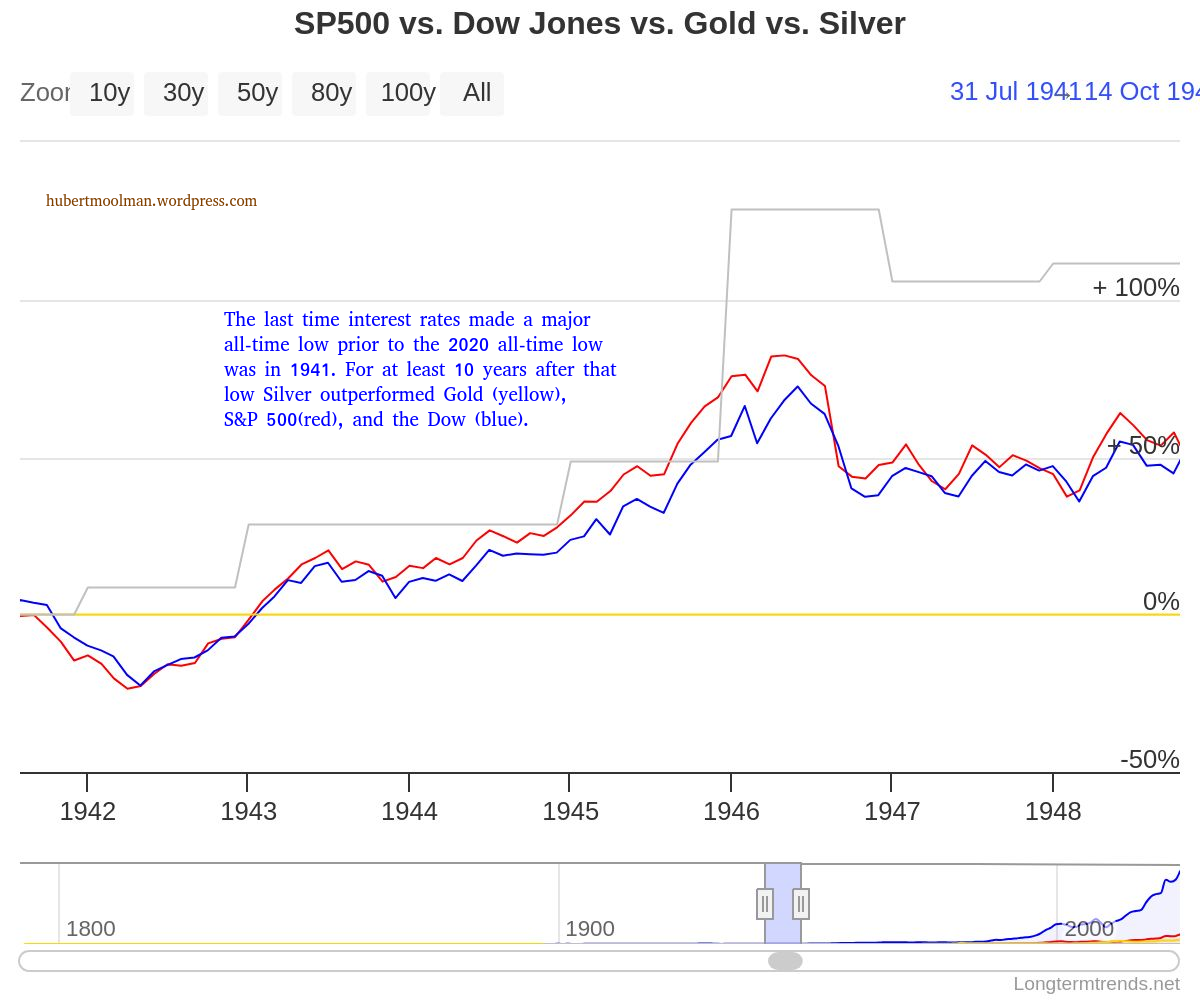The 1944 Bretton Woods agreement established a new international monetary order after significant international events.
The creation of the Federal Reserve Bank and the so-called Second World War were among the most important events and actions that contributed to bringing the world to a situation where a new international order was required and possible due to excessive debt levels.
The world was in a vulnerable condition, and therefore some key nations could force upon it a new monetary order—one that was not in the best interest of the majority but of those few of a special ownership class.
Below is a long-term chart of interest rates:

On the chart, I have attempted to show some of the key events and actions that led up to the 1944 Bretton Woods Agreement and how this rhymes with “Peak Debt." Furthermore, this forms a pattern that appears to be setting up for the next monetary reset.
The creation of central banks all over the world was a key element in setting up this control structure. Just like the US dollar is the pivot in the current world monetary order, setting up the Federal Reserve Bank of the US was crucial for the success of this enterprise in taking control of the world.
Central banks are useful tools for the proliferation of credit. The creation of the Federal Reserve Bank (and others) was the mechanism by which debt levels could be significantly increased to the point of vulnerability required for a monetary reset.
From the creation of the Federal Reserve Bank to the bottom of interest rates in 1941 (0 to 4) a series of events are highlighted, which are now possibly being replicated, starting from the 1971 gold bankruptcy (0) to where we are today just after the all-time low of interest rates (4).
It is very plausible to seek a new start (Jubilee) after debt levels reach a certain amount of saturation (the point of vulnerability). After years of credit proliferation, the world is again ripe for a new monetary order that could be forced upon it due to exceedingly high debt levels and the spoils of war.
In many ways, the current war between the West and Russia (and others) is for dominance of the next world monetary construct. We should be looking for this “reset” as US dollar dominance decreases and this current war concludes.
It is almost inevitable that gold will play a major role in the future monetary system or monetary systems. However, the big surprise is likely to be silver. I have explained many times how silver is the opposite or antithesis of debt; therefore, it will naturally feature heavily when there is a massive debt problem to be solved.
During the previous reset (1944), silver was at a different point of its cycle, which probably prevented it from playing a concrete part in the new monetary order. However, now silver is more likely to be appreciated for its monetary properties and could therefore feature heavily in a new reset (a reset that will actually work). For more on the coming monetary reset as well as the role silver could play.
Below is a chart showing the performance of gold, silver, the S&P500, and the Dow Jones after the last major interest rate bottom (1941).

Silver outperformed gold and the stock market at least a decade after the major interest rate bottom. There is also a very good chance that this will be the case again.
The 2020 and 1942 all-time lows in interest rates are extremely important events that line up with other key inflection points, and this is critical for understanding issues regarding the coming monetary collapse. I discuss this and more at my new monetary reset blog.
Warm regards
Hubert Moolman

